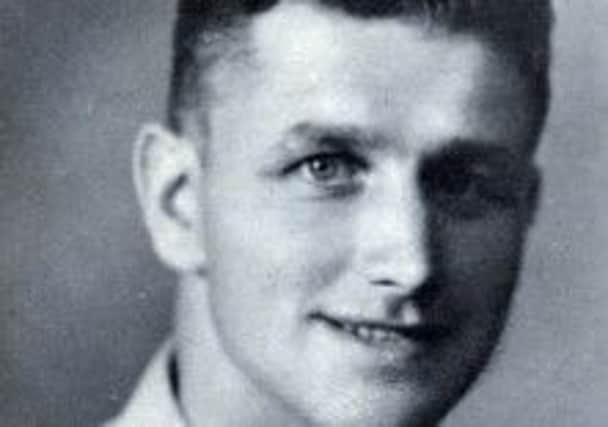Obituary: William Frier, shipping clerk, Rover Scot and Quartermaster Sergeant


William Murray Frier, former shipping clerk, Rover Scout, Quartermaster Sergeant and “Desert Rat”. Born: 27 December, 1911, in Glasgow. Died: 20 February, 2014, in Edinburgh, aged 102.
Murray joined 50,000 Boy Scouts at the 3rd World Scout Jamboree at Arrowe Park in Birkenhead, where continuous rain turned the campground into a quagmire.
Advertisement
Hide AdAdvertisement
Hide AdIn 1931, as one of a small Scottish contingent at the 1st World Rover Moot in Kandersteg, Switzerland, he photographed the Chief Scout, Robert Baden-Powell, and his wife (the Chief Guide), and he was at the 2nd Moot in 1935 at Ingarö in Sweden, both of which attracted 3,000 Rover Scouts from more than 20 countries.
He also attended the 3rd World Rover Moot at Monzie Castle, near Crieff, in 1939 on the eve of the Second World War. These international scouting events fostered friendship between young men of many countries, yet tragically preceded the global conflict of the Second World War, in which many were actively involved on opposing sides.
In the 1930s, the 4th Leith (St Serf’s) Rover Scout Crew in Trinity, North Edinburgh, became renowned for a series of highly popular shows that predated the Edinburgh Gang Show by many years. Intended to raise funds to build a permanent HQ, they also entertained people in local hospitals and residential homes and raised money for charity. The group possessed some excellent performers, ably supported by the creative talent of their charismatic Scout Leader, John Leask.
Murray, along with his older brother Jim, was an enthusiastic participant, performing sketches, songs and recitations. Both held Scout Leader warrants from 1929. After the war the former 4th Leith Rovers formed a branch of the Baden-Powell Guild, and met regularly for 50 years, maintaining their life-long friendships.
With war imminent in 1939, Murray joined the Territorial Army, and commenced training as a gunner. The 291st battery was one of three in the 94th Anti-Aircraft Regiment of the Royal Artillery and was recruited from the banks, insurance companies, legal and other professional offices in Edinburgh.
In 1940 they were sent to Aberdeen to man anti-aircraft defences at the beach and harbour, and shot down a German Heinkel III plane that was bombing the shipyards. In April 1941 the entire regiment travelled to Egypt to join the 8th Army. They sailed from Gourock on the troop ship Aronda, travelling in convoy to South Africa where the bright lights of Durban were a revelation after the blackout in Britain, and arrived in Port Suez in June.
During the Western Desert campaign the regiment had postings in Egypt, Palestine, Libya and Tunisia, and took part in the second Battle of El Alamein in 1942, which turned the tide against Rommel’s Axis forces. Murray’s main recollection of the battle was the incessant and prolonged din of the artillery bombardment preceding the Allied advance.
Murray became a Quartermaster Sergeant in the army stores, which gave him licence to forage further afield for provisions and negotiate with Arab traders for supplies.
Advertisement
Hide AdAdvertisement
Hide AdAlthough seldom in the front line, he came under fire in a troop column, was strafed in camp by enemy aircraft and once unknowingly traversed a British minefield in a lorry, fortunately emerging unscathed. In Cairo, he scaled the Great Pyramid of Giza, climbing to within a few feet of the top, and achieved this physical feat despite the intense heat.
Proud to be called a “Desert Rat”, his scouting experience had prepared him for the rigours and privations of life in the desert, where sand, dust and flies penetrated everywhere and scorpions crawled under his pillow for warmth during the cold desert night. Despite the dangers, he regarded his wartime experience as one of the highlights of his life.
Educated at Broughton School in Edinburgh, Murray started work at 15, first as an office boy with shipbrokers in Leith, then as a shipping clerk and commercial traveller with Coast Lines Ltd, a coastal shipping firm that by 1951 operated a fleet of 109 ships, carrying over four million tons of cargo, half a million head of livestock, and more than a million passengers.
Murray canvassed for business from firms and factories throughout the south-east of Scotland and the Borders and was so successful that his firm struggled to cope with the volume of freight that he generated. From the 1950s onwards, the growth of road haulage eclipsed freight transport by coastal shipping and in 1971 Coast Lines Ltd. was taken over by P & O Ferries and the Leith office was closed. Murray then worked on the 1971 National Census and was retained by the Civil Service until he retired in 1976.
He was an elder in the Church of Scotland for more than 50 years, serving for 12 years as Session Clerk at Stockbridge Church in Edinburgh, and as an elder at St Stephen’s Church, Comely Bank until 1996.
Murray’s lifelong hobby was growing vegetables, fruit and flowers in his allotment, which he maintained until his mid-90s. In August 1946 he married Christina Anderson, who predeceased him in 2007. He is survived by his son, daughter and four grandchildren.